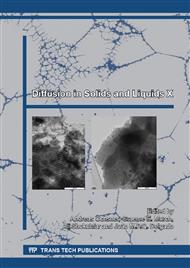p.183
p.188
p.194
p.200
p.207
p.212
p.219
p.226
p.232
Hydrolysis to Produce Etanol Macambira (Bromélia laciniosa)
Abstract:
The macambira (Bromelia laciniosa) is a plant from the Bromeliaceae Family, Bromeliad genus, found in the Brazilian Northeast, highly resistant to dry climates. It has no commercial value. The aim of this study was to evaluate the potential of the macambira for ethanol production. For this, samples were collected in the rural area of Nova Floresta in the state of Paraíba, where the leaves were cut into small pieces, and then went through a process of drying in circulating air and went through a process of milling. The chemical characterization of the leaves was performed in order to determine the moisture, extracts, cellulose, hemicellulose, lignin and ash content. During the chemical characterization the following values were obtained; 8.14 ± 0.08% moisture, 7.49 ± 0.79% extracts, 28.49 ± 0.9% cellulose, 37.24 ± 0.9% hemicellulose, 5.42 ± 0.4% lignin 3.62 ± 0.1% ash. The pretreatment was performed with diluted acid to hydrolyze hemicellulose, and then acid hydrolysis was performed. Both were conducted in a stainless steel reactor with a capacity of 700 mL, with control of internal and external temperature. The concentration of sugars resulting from the acid hydrolysis was quantified using the technique of high performance liquid chromatography.
Info:
Periodical:
Pages:
207-211
Citation:
Online since:
July 2015
Authors:
Keywords:
Price:
Сopyright:
© 2015 Trans Tech Publications Ltd. All Rights Reserved
Share:
Citation:


